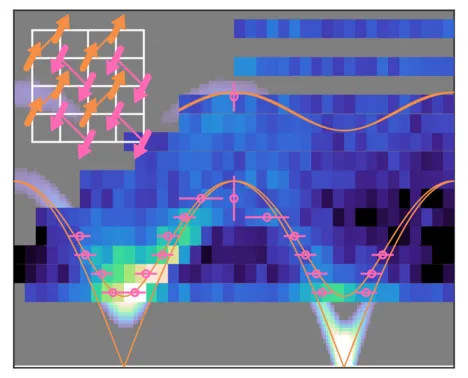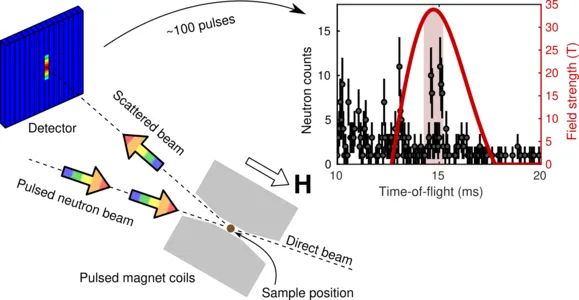
Quantum magnets serve as ideal testing grounds for many-body quantum physics. The research in this field is propelled like a ping-pong ball between theory and experiment; either theoretical predictions are tested with experiment or surprising experimental observations call for new theory. In the Quantum Magnetism group, we investigate such model compounds experimentally. More specifically we study frustrated magnets such as SrCu2(BO3)2 and Sr2CuTe1-xWxO6 and magnetoelectric systems such as LiMPO4 (M = Ni, Fe, Co, Mn) and TbPO4. In both types of systems the magnetic and electronic degrees of freedom are intertwined such that symmetry breaking and lattice distortions play a key role for the magnetic ground state and physical properties in general. We study these materials by using in-house methods such as specific heat and magnetic susceptibility but our expertise lies in neutron scattering experiments, in particular under extreme conditions of high magnetic fields and pressures.

Neutron scattering is the ideal technique for studying magnetic structures (diffraction) and excitations (spectroscopy) is the central tool in this project. The neutron interacts with both the atomic cores and spins in a sample. The relatively weak interaction potential of the neutron with matter furthermore makes it possible to probe materials inside large pieces of equipment for controlling the sample environment (magnets, furnaces, cryostats, pressure cells etc.). Moreover, it is the only momentum-sensitive experimental probe which matches the energy range of typical magnetic excitations and which can distinguish chirality when also analyzing the neutron spin polzarization. The downside is a weak signal which is not helped by the inherently low neutron flux from known reactor and spallation sources. Nevertheless, the disadvantages are massively outweighed by the advantages and even though a neutron scattering experiment may take several days it very often provides the decisive piece of evidence to understand a given system.

Pressure. By applying hydrostatic pressure to a material, the atoms are squeezed closer together. This directly changes the electronic environment which again governs the magnetic interactions. Pressure is a very clean way of manipulating exchange interactions since it does not involve ion substitution or strain. It is relatively straight forward to include in theoretical models which again may be compared to the experiment.
Magnetic fields, like pressure, represent an invaluable control parameter with its exactly known theoretical description and the possibility to accurately tune the field strength to drive systems in situ. Many phase transitions occur at elevated fields and it is therefore important to have access to high magnetic fields for neutron scattering experiments.

Theory. To gain a better physical understanding of the more classically behaving systems we perform Monte Carlo simulations and linear spin-wave-theory calculations for the more classically having systems. For more the sophisticated numerical methods needed for highly frustrated systems and systems governed by quantum fluctuations we collaborate with theoretical groups at TUM and elsewhere. Close links to a leading theoretical group working on low-dimensional quantum magnets ensures a never-resting ping-pong ball between experiment and theory.